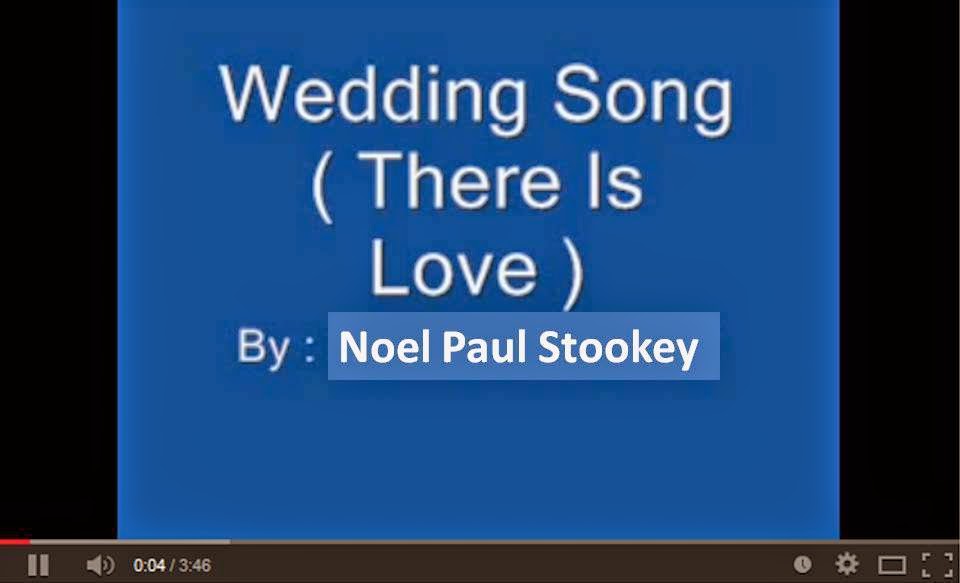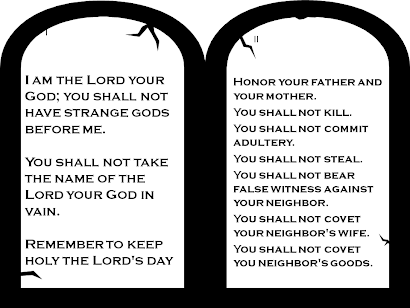Are there Catholic weddings where Noel Paul
Stookey’s beautiful “Wedding Song” is not performed? Ironically, Ephesians 5: 21-33 seems to be a
much, much less popular selection. For
fear of its being misunderstood, people seem to frequently shy away from Ephesians 5: 21-33. How sad!
- “Be subordinate to one another out of reverence for Christ. Wives should be subordinate to their husbands as to the Lord. For the husband is head of his wife just as Christ is head of the church, he himself the savior of the body. As the church is subordinate to Christ, so wives should be subordinate to their husbands in everything. Husbands, love your wives, even as Christ loved the church and handed himself over for her to sanctify her, cleansing her by the bath of water with the word, that he might present to himself the church in splendor, without spot or wrinkle or any such thing, that she might be holy and without blemish. So (also) husbands should love their wives as their own bodies. He who loves his wife loves himself. For no one hates his own flesh but rather nourishes and cherishes it, even as Christ does the church, because we are members of his body. ‘For this reason a man shall leave (his) father and (his) mother and be joined to his wife, and the two shall become one flesh.’ This is a great mystery, but I speak in reference to Christ and the church. In any case, each one of you should love his wife as himself, and the wife should respect her husband.” (Ephesians 5: 21 – 33)
Pope John Paul II offers a profound
reflection on marriage as a sacrament.
A sacrament is not a mere sign or symbol; it is an efficacious sign. It makes real what it signifies. As the ministers of the sacrament, are not
husbands and wives intended to be spiritual directors – of sorts – to each other?
- “The sacrament is a sign of grace, and it is an efficacious sign” (7/28/82).
- “Husband and wife are, in fact, ‘subject to one another,’ mutually subordinated to one another. The source of this reciprocal submission lies in Christian pietas and its expression is love….Love excludes every kind of submission by which the wife would become a servant or slave of the husband, an object of one-sided submission. Love makes the husband simultaneously subject to the wife, and subject to the Lord himself, as the wife is to the husband. The community or unity that they should constitute because of marriage is realized through a reciprocal gift, which is also a mutual submission. Christ is the source and at the same time the model of that submission….the reciprocal relationship between the spouses, husband and wife, should be understood by Christians according to the image of the relationship between Christ and the Church….marriage corresponds to the vocation of Christians only when it mirrors the love that Christ, the Bridegroom, gives to the Church, his Bride, and which the Church (in likeness to the wife who is ‘subject,’ and tus completely given) seeks to give back to Christ in return….the mystery of the redemption of the body conceals within itself in some sense the mystery ‘of the marriage of the Lamb’ (see Rev 19:7)” (8/11/82).
- “The expression according to which man ‘nourishes and cares’ for his own flesh – that is, the husband nourishes and cares for his wife’s flesh as for his own….referring to care for the body, and above all for its nourishment, to providing food for it, suggest to a number of Scripture scholars a reference to the Eucharist, with which Christ, in his spousal love, ‘feeds’ the Church….they help us at the same time to understand, at least in a genera way, the dignity of the body and the moral imperative to care for its good ” (9/1/82)
- “the visible sign of marriage ‘in the beginning,’ inasmuch as it is linked to the visible sign of Christ and the Church on the summit of God’s saving economy, transposes the eternal plan of love into the ‘historical’ dimension and makes it the foundation of the whole sacramental order” (9/29/82).
- “As for marriage, one can deduce that – instituted in the context of the sacrament of creation in its totality, or in the state of original innocence – it was to serve not only to extend the work of creation, or procreation, but also to spread the same sacrament of creation to future generations” (10/6/82)
- [In spite of original sin] “marriage has remained the platform for the realization of God’s eternal plans, according to which the sacrament of creation had come near to human beings and prepared them for the sacrament of redemption, introducing them into the dimension of the work of salvation” (10/13/82).
- “all the sacraments of the New Covenant find their prototype in some way in marriage as the primordial sacrament” (10/20/82).
- “When Christ, in the presence of his interlocutors in Matthew and Mark (see Mt 19; Mk: 10) confirms marriage as a sacrament instituted by the Creator ‘at the beginning’ – when he accordingly requires its indissolubility – he thereby opens marriage to the salvific action of God, to the powers flowing ‘from the redemption of the body’, which help to overcome the consequences of sin and to build the unity of man and woman according to the Creator’s eternal plan. The salvific action deriving from the mystery of redemption takes into itself God’s original sanctifying action in the very mystery of creation….Redemption becomes at the same time the basis for understanding the particular dignity of the human body….redemption is given to man as the grace of the new covenant with God in Christ – and at the same time it is assigned to him as ethos, as the form of morality that corresponds to the action of God in the mystery of redemption” (11/24/82)
- “marriage is an efficacious expression of the saving power of God….As a sacramental expression of that saving power, marriage is also an exhortation to gain mastery over concupiscence….A fruit of this mastery is the unity and indissolubility of marriage and…the deepened sense of the woman’s dignity in the man’s heart (as also the man’s dignity in the woman’s heart)….life ‘according to the spirit’ expresses itself also in the reciprocal ‘union’… by which the spouses…submit …to the blessing of procreation….in the deep awareness of the holiness of the life (sacrum) to which both give rise, thereby participating in the powers of the mystery of creation” (12/1/82)
- “the author of Ephesians speaks about a ‘great mystery’ linked with the primordial sacrament through the continuity of God’s salvific plan….That ‘great mystery’ is above all the mystery of the union of Christ with the Church, which the Apostle presents in the likeness of the unity of spouses….The union of Christ with the Church allows us to understand in what way the spousal meaning of the body is completed by the redemptive meaning…not only in marriage or ‘continence’…, but also, for example, in the many kinds of human suffering, indeed in man’s very birth and death” (12/15/82).
























No comments:
Post a Comment